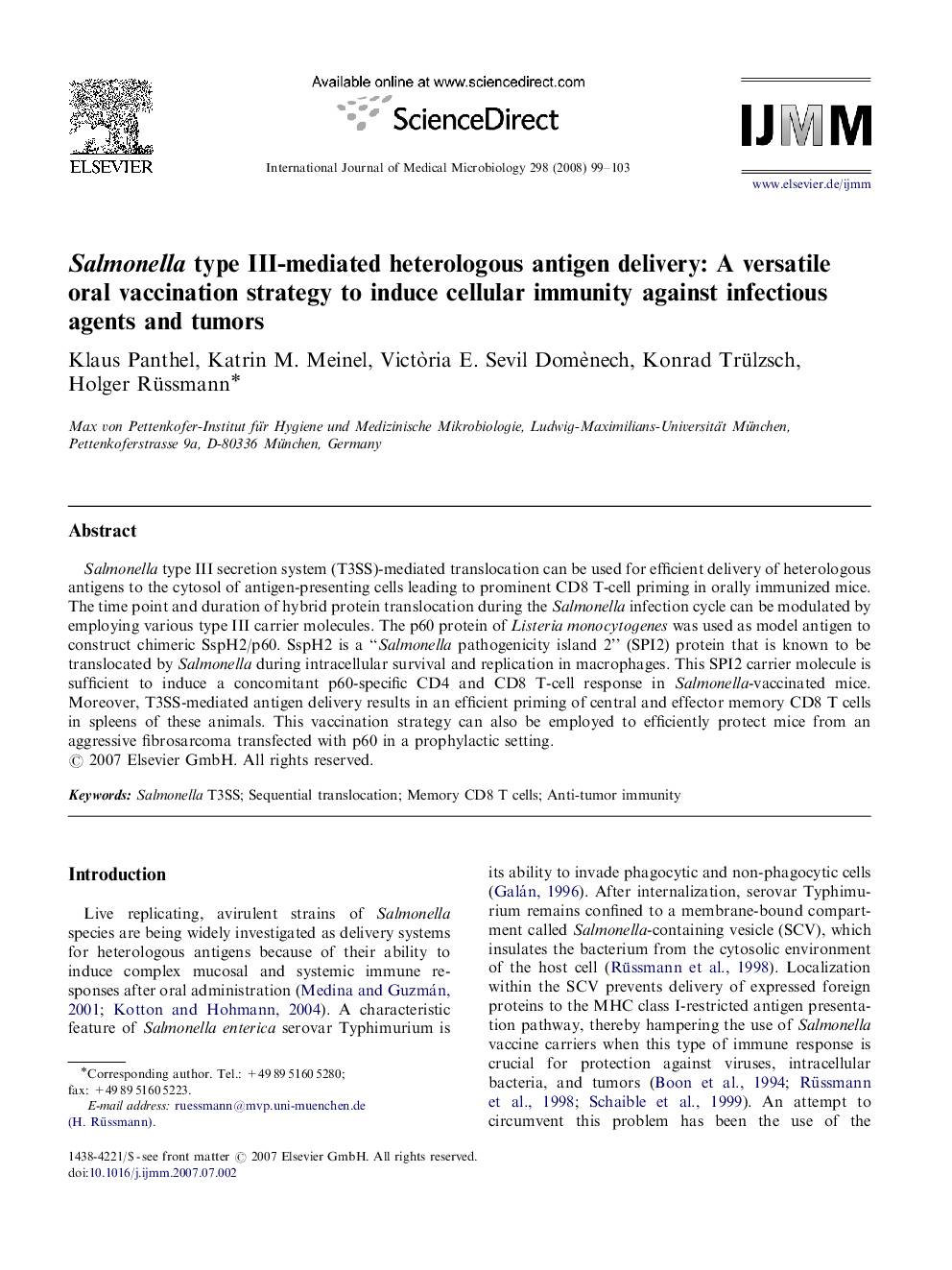| کد مقاله | کد نشریه | سال انتشار | مقاله انگلیسی | نسخه تمام متن |
|---|---|---|---|---|
| 2054270 | 1543741 | 2008 | 5 صفحه PDF | دانلود رایگان |

Salmonella type III secretion system (T3SS)-mediated translocation can be used for efficient delivery of heterologous antigens to the cytosol of antigen-presenting cells leading to prominent CD8 T-cell priming in orally immunized mice. The time point and duration of hybrid protein translocation during the Salmonella infection cycle can be modulated by employing various type III carrier molecules. The p60 protein of Listeria monocytogenes was used as model antigen to construct chimeric SspH2/p60. SspH2 is a “Salmonella pathogenicity island 2” (SPI2) protein that is known to be translocated by Salmonella during intracellular survival and replication in macrophages. This SPI2 carrier molecule is sufficient to induce a concomitant p60-specific CD4 and CD8 T-cell response in Salmonella-vaccinated mice. Moreover, T3SS-mediated antigen delivery results in an efficient priming of central and effector memory CD8 T cells in spleens of these animals. This vaccination strategy can also be employed to efficiently protect mice from an aggressive fibrosarcoma transfected with p60 in a prophylactic setting.
Journal: International Journal of Medical Microbiology - Volume 298, Issues 1–2, 3 January 2008, Pages 99–103